Each June, almost every company changes their logo to a rainbow color scheme. Consumers are bombarded with products filled with rainbow and glitter. Cities host parades and celebrations all month-long – what is the reason for this shift? To “celebrate” LGBTQIA+ (Lesbian, Gay, Bisexual, Transgender, Queer/Questioning, Intersex, Asexual +) Pride.
The fact is: the first Pride was a riot. Infamously in June of 1969, the New York City Police violently raided the Stonewall Inn, a bar that doubled as a sanctuary for the local LGBTQIA+ community. This wasn’t uncommon. What was “special” about that night at Stonewall was that the patrons, made up of members of the LGBTQIA+ community, resisted. That was the start of what many call the uprising or revolution of gay rights activism and forward progress for the LGBTQIA+ community and for human rights. The next year, on the anniversary of the raid, the community organized a march: the Pride parade was born.
Many recount that the Stonewall riots started due to police violence against a woman dressed in masculine clothing, something that was illegal at the time. The riots transformed into organized activism led by Black and brown transgender women. Sadly, this group continues to be the most marginalized and attacked subgroup of the LGBTQIA+ community in the United States, despite leading the charge to liberation. Still today, there are many systems in place that actively harm the LGBTQIA+ community and specifically transgender folks.
According to transequality.org, more than one in four trans people have faced a bias-driven assault, and the rates are higher for trans women and trans people of color. In 2021, the Human Rights Campaign (HRC) reported that at least 50 transgender and gender non-conforming people were killed in the United States. Considering that these deaths are underreported, this number is likely higher.
As GenZers embrace gender fluidity (one recent study found that nearly 25% of GenZers expect to change their gender identity at least once in their lifetime), it is imperative that the construction industry works together to make our jobsites and workplaces safe, supportive, and inclusive for transgender and nonbinary folks.
By educating oneself on the history of pride, the violence and discrimination against the LGBTQIA+ community, and the statistics around gender identity, we can collectively take steps towards LGBTQIA+ equality and inclusion. Here are some policies and practices from Out & Equal to establish a safe and inclusive workplace culture that prioritizes a sense of belonging and retention.
KEY WORKPLACE POLICIES AND PRACTICES
Developed by Out & Equal Workplace Advocates
- Non-discrimination protections
Non-discrimination protections codified into your company’s policies will assure current employees and potential job applicants that they will be treated equally and will be legally protected from discrimination as an LGBTQIA+ person. Because some countries do not recognize protections for LGBTQIA+ people, it is extremely important to have your company’s own policy reflect its commitment to non-discrimination. The terminology of “sex”, “sexual orientation” and “gender identity” should be specifically named as protected categories. Intersex should also be a covered category under non-discrimination provisions that prohibit discrimination on the basis of sex. For more information on intersex inclusion in the workplace, check out Supporting Intersex Inclusion in the Workplace.
- Business Inclusion of LGBTQ-owned Businesses
Economic inclusion is one of the biggest ways to make a difference for LGBTQIA+ people in the construction industry. Partner with associations like BuildOUT California and include LGBTQIA+ owned contractors and suppliers in your trade partner outreach to promote sustainable growth of LGBTQIA+ owned & certified businesses.
- Inclusive Healthcare Coverage
Ensure that your company has transgender, nonbinary, and intersex-inclusive healthcare coverage under their own insurance and paid medical leave policies. If applicable, this coverage should also include their dependents in receiving transition-related care or any ongoing care as a transgender, nonbinary, or intersex person. Encourage the appropriate team members at your company to work with insurance providers or administrators to adopt guidelines for this level of inclusive coverage.
- Gender Neutral Facilities
Gender neutral facilities, such as restrooms and locker rooms, create a more comfortable and safer situation for transgender and nonbinary employees. Gender neutral facilities can help protect these employees from discrimination or harassment and free them of having to make decisions about their gender identity that do not reflect their internal sense of self. Organizations should determine if there are opportunities to create gender neutral facilities in their buildings. There are often ways to get creative in establishing neutral washrooms – for instance, converting existing single-person person male and female restrooms into all gender restrooms.
- Self-Identification of LGBTQIA+ Employees
Because sexual orientation and gender identity are not typically visible characteristics in the workplace, self-identification is especially important for LGBTQIA+ employees for visibility and representation. Self-ID programs allow employers to understand the size and diversity of their LGBTQIA+ workforce and meaningfully track progress towards key inclusion goals. Given the sensitive nature of self-ID, it’s important that these programs are completely optional, anonymous, and accompanied by a robust communication plan.
- Gender Transition Guidelines
Gender transition guidelines are a set of recommendations and policies that establish best practices to support and protect trans and nonbinary employees through their transition. There’s no one way to transition and everyone’s journey is unique – some people may choose to medically transition, make pronoun changes, change their name, etc. It is critical that an individual’s transgender status is considered confidential and only disclosed as needed and with consent, and that name and gender marker change protocols are instilled into an organization’s systems regardless of legal status and without requiring documentation, as some individuals opt not to or cannot make these changes legally. No matter what an employee chooses to do, the gender transition guidelines and policies should be in place to support this employee.
- Trans-Inclusive Employee Resource Groups
Employee Resource Groups (ERGs) are employee-led groups bringing together people with common identities, special interest, or life experience with the ultimate goal of fostering a sense of community and inclusion within a company. It is imperative that LGBTQIA+ ERGs are inclusive and welcoming of trans and nonbinary employees, this includes trans-inclusive programming, representation in ERG leadership, and creating a safe space for trans and nonbinary employees.













































